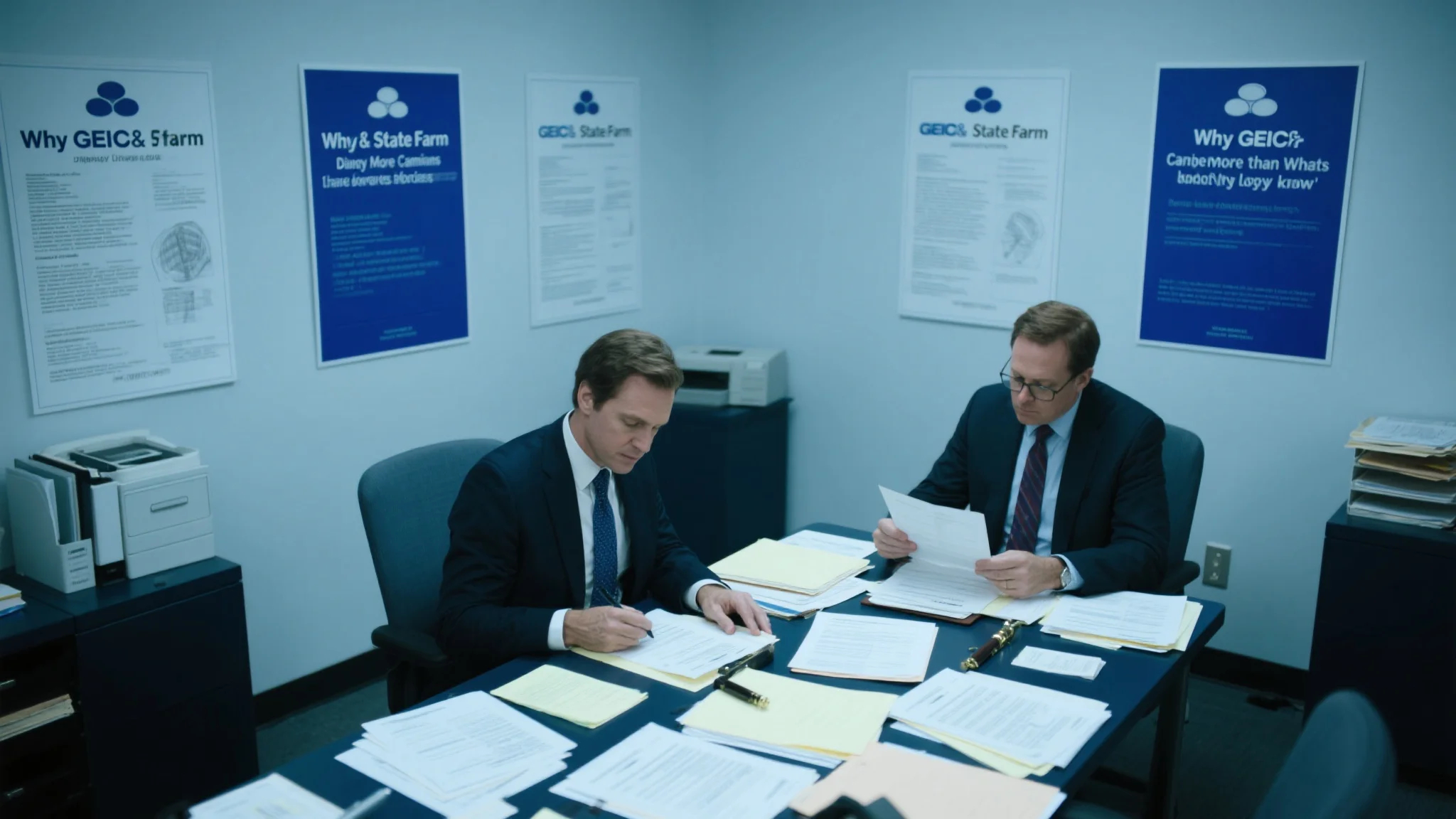Writing an effective demand letter after your insurance claim has been denied represents one of the most critical steps in recovering the compensation you rightfully deserve. The power of a well-crafted demand letter insurance claim cannot be overstated – it serves as your formal declaration that you will not accept the insurance company’s initial denial and that you have compelling reasons why their decision should be reversed. Insurance companies receive thousands of claim denials every month, but they also know that most policyholders will simply accept these denials without challenge. When you submit a professionally written demand letter, you immediately distinguish yourself from the majority of claimants who either give up or submit weak, emotional appeals that insurance adjusters can easily dismiss. The foundation of any successful demand letter lies in understanding that insurance companies are businesses driven by profit margins, and they make decisions based on legal liability, financial exposure, and the likelihood that a claimant will pursue further action. Your demand letter must speak their language – the language of facts, legal precedent, policy interpretation, and financial consequences. This means abandoning emotional appeals about how the denial has affected your life and instead focusing on concrete evidence that demonstrates why the denial was incorrect, improper, or legally indefensible. The most effective demand letters follow a specific structure that insurance companies recognize and respect: a clear statement of facts, identification of the specific policy provisions that support your claim, documentation of all damages and losses, citation of relevant legal authorities, and a specific demand for action within a reasonable timeframe. Each element serves a strategic purpose in building an irrefutable case that the insurance company cannot ignore without risking significant legal and financial consequences. Professional insurance adjusters and company attorneys know immediately when they’re reading a demand letter prepared by someone who understands the insurance industry, legal requirements, and negotiation tactics. These letters receive priority attention and serious consideration because insurance companies recognize that sophisticated claimants are more likely to pursue litigation if their demands are not met. The language, tone, and presentation of your demand letter sends a powerful message about your seriousness, knowledge, and resources – factors that directly influence how insurance companies respond to your appeal.
Essential Components and Strategic Framework for Maximum Impact
The strategic framework underlying successful insurance claim negotiation through demand letters requires meticulous attention to both legal requirements and psychological factors that influence insurance company decision-making. Insurance adjusters and company attorneys evaluate demand letters using specific criteria that determine whether a claim will be reconsidered, settled, or defended in litigation. Understanding these evaluation criteria allows you to structure your demand letter in ways that maximize its persuasive impact and minimize the likelihood of continued denial. The opening section of your demand letter must immediately establish credibility and seriousness by providing a comprehensive but concise summary of the claim, the denial, and the fundamental reasons why the denial was incorrect. This section should reference specific policy numbers, claim numbers, dates of loss, and the exact language used in the denial letter to demonstrate that you have thoroughly reviewed all relevant documentation. Insurance companies pay particular attention to claimants who demonstrate detailed knowledge of their policies and the claims process because this suggests the presence of legal counsel or sophisticated understanding that could lead to expensive litigation. The factual foundation section represents the heart of your demand letter and must present a chronological, detailed account of all events leading to your loss, supported by specific documentation and evidence. This section should read like a legal brief rather than a personal narrative, focusing on objective facts that can be verified and substantiated rather than subjective interpretations or emotional reactions. Every statement should be supported by specific evidence, whether that’s photographs, medical records, police reports, witness statements, expert opinions, or other documentation that insurance companies cannot easily dispute or dismiss. The policy analysis section demonstrates your understanding of the insurance contract and specifically identifies the policy provisions that require coverage for your loss. This section should quote relevant policy language verbatim and explain how the facts of your case clearly fall within the coverage provided by these provisions. Insurance companies often deny claims based on creative interpretations of policy language or by citing exclusions that don’t actually apply to the specific circumstances of the loss. Your demand letter must systematically address each reason given for the denial and demonstrate why these reasons are legally or factually incorrect. This requires careful analysis of the exact language used in the denial letter and point-by-point refutation of each argument made by the insurance company. The damages section must provide detailed documentation of all losses resulting from the covered event, including both economic and non-economic damages where applicable. This section should include specific dollar amounts supported by bills, receipts, estimates, expert valuations, and other concrete evidence of financial impact.
The legal authority section elevates your demand letter from a simple appeal to a sophisticated legal argument by citing relevant statutes, regulations, case law, and industry standards that support your position. Insurance companies take these citations seriously because they indicate potential legal exposure and the likelihood that you have access to competent legal representation. This section should reference specific state insurance regulations that govern claim handling procedures, unfair claims practices statutes, and any relevant case law that supports your interpretation of policy language or claim handling requirements. Many states have specific laws requiring insurance companies to conduct reasonable investigations, respond to claims within specified timeframes, and provide clear explanations for denials. Violations of these requirements can result in bad faith claims that expose insurance companies to damages far exceeding the original claim amount. Your demand letter should identify any procedural violations or bad faith practices that occurred during the initial claim handling process. The negotiation strategy embedded within your demand letter must balance firmness with reasonableness to create incentives for settlement while avoiding unnecessary antagonism that could harden the insurance company’s position. This requires careful consideration of the specific demand amount, which should be supported by detailed calculations and reasonable justifications rather than arbitrary figures that insurance companies can easily dismiss as excessive. The demand amount should account for all documented losses plus any additional damages resulting from the improper denial, such as consequential damages, interest, and attorney fees where permitted by law. The timeline for response should be reasonable but firm, typically ranging from 30 to 60 days depending on the complexity of the claim and the extent of additional investigation required. This timeline creates urgency while allowing sufficient time for the insurance company to conduct a thorough review of your demand. The consequences section should clearly but professionally outline the actions you will take if the insurance company fails to respond appropriately to your demand, including potential litigation, regulatory complaints, and other remedies available under state law. This section should be factual rather than threatening, focusing on your legal rights and available remedies rather than emotional reactions or personal grievances. The professional presentation of your demand letter significantly impacts how insurance companies perceive and respond to your appeal, with factors such as formatting, organization, documentation quality, and legal sophistication all contributing to the overall impression of credibility and seriousness that determines whether your demand receives priority attention and favorable consideration.
Advanced Tactics and Professional Strategies for Compelling Results
The most effective winning demand letter tips involve sophisticated strategies that go beyond basic claim presentation to create compelling legal and business arguments that insurance companies cannot ignore without significant risk. Professional attorneys and experienced claim advocates understand that insurance companies make decisions based on cost-benefit analysis, legal exposure assessment, and resource allocation considerations that extend far beyond the merits of individual claims. Your demand letter must address these business realities by demonstrating that denying your claim will cost the insurance company more than paying it, either through litigation expenses, regulatory scrutiny, reputational damage, or potential bad faith exposure. The investigation enhancement strategy involves conducting your own independent investigation that goes beyond the insurance company’s initial review, uncovering additional evidence, expert opinions, and documentation that supports your claim. This might include hiring independent experts to evaluate damages, obtaining additional witness statements, commissioning professional reports, or conducting research that reveals similar claims that were paid by the same insurance company under comparable circumstances. Insurance companies respect claimants who demonstrate the resources and commitment to conduct thorough investigations because this suggests serious intent to pursue all available remedies. The expert witness strategy involves obtaining professional opinions from qualified experts who can provide authoritative support for your claim, whether that’s medical professionals, engineers, accident reconstruction specialists, financial analysts, or other experts whose credentials and opinions carry weight with insurance companies. Expert reports included with demand letters significantly increase the likelihood of favorable reconsideration because insurance companies know that expert testimony can be devastating in litigation and expensive to counter with their own experts. The regulatory leverage strategy involves understanding and referencing the specific regulatory framework governing insurance practices in your state, including unfair claims practices regulations, prompt payment requirements, and consumer protection statutes that create legal obligations for insurance companies. Many states have detailed regulations specifying how insurance companies must handle claims, investigate losses, communicate with policyholders, and document their decision-making processes. Violations of these regulations can result in regulatory sanctions, fines, and additional legal exposure that insurance companies work hard to avoid. Your demand letter should identify any regulatory violations that occurred during the initial claim handling process and reference the specific penalties and consequences that could result from continued non-compliance.

The precedent analysis strategy involves researching and citing similar claims that were paid by the same insurance company or similar claims that resulted in favorable court decisions, demonstrating that your claim falls within established patterns of coverage that the insurance company has previously recognized. Insurance companies maintain detailed databases of claim payments and legal precedents, and they pay careful attention to consistency in their claim handling practices to avoid discrimination claims and regulatory scrutiny. The bad faith documentation strategy involves carefully documenting any evidence of bad faith claim handling practices, such as unreasonable delays, inadequate investigations, misrepresentation of policy terms, or failure to follow proper procedures. Bad faith claims can result in damages far exceeding the original claim amount, including punitive damages, attorney fees, and consequential damages that create significant financial exposure for insurance companies. Your demand letter should clearly identify any bad faith practices while maintaining a professional tone that focuses on legal violations rather than personal attacks. The escalation pathway strategy involves structuring your demand letter to create a clear progression of consequences that will occur if the insurance company fails to respond appropriately, including specific deadlines, regulatory complaints, litigation threats, and other remedies that demonstrate your commitment to pursuing all available options. This strategy requires careful balance between firmness and reasonableness, creating urgency without appearing unreasonable or overly aggressive. The documentation quality strategy involves presenting all supporting evidence in a professional, organized manner that makes it easy for insurance company reviewers to understand and evaluate your claim. This includes creating detailed exhibits, providing clear summaries of complex documentation, and organizing materials in logical sequences that support your narrative and legal arguments. Insurance adjusters and attorneys appreciate well-organized presentations because they save time and demonstrate the claimant’s seriousness and attention to detail. The follow-up strategy involves planning and implementing systematic follow-up communications that maintain pressure on the insurance company while providing additional opportunities for resolution before pursuing more aggressive remedies. This might include supplemental demand letters that address new information or changed circumstances, phone calls to confirm receipt and discuss timeline expectations, and written confirmations of any verbal communications or commitments made by insurance company representatives. The settlement negotiation strategy involves understanding the insurance company’s likely settlement range and structuring your demand to create room for negotiation while maintaining your bottom-line requirements. This requires realistic assessment of your claim’s strengths and weaknesses, understanding of similar settlements in your jurisdiction, and strategic thinking about timing and leverage factors that might influence the insurance company’s willingness to settle. Professional demand letters that incorporate these advanced strategies demonstrate sophistication and seriousness that insurance companies recognize and respect, significantly increasing the likelihood of favorable reconsideration and successful resolution of denied claims.



